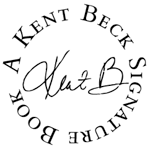Mike Cohn - User Stories Applied
Here you can read online Mike Cohn - User Stories Applied full text of the book (entire story) in english for free. Download pdf and epub, get meaning, cover and reviews about this ebook. year: 2004, publisher: Pearson Education Limited (US titles), genre: Home and family. Description of the work, (preface) as well as reviews are available. Best literature library LitArk.com created for fans of good reading and offers a wide selection of genres:
Romance novel
Science fiction
Adventure
Detective
Science
History
Home and family
Prose
Art
Politics
Computer
Non-fiction
Religion
Business
Children
Humor
Choose a favorite category and find really read worthwhile books. Enjoy immersion in the world of imagination, feel the emotions of the characters or learn something new for yourself, make an fascinating discovery.

- Book:User Stories Applied
- Author:
- Publisher:Pearson Education Limited (US titles)
- Genre:
- Year:2004
- Rating:4 / 5
- Favourites:Add to favourites
- Your mark:
- 80
- 1
- 2
- 3
- 4
- 5
User Stories Applied: summary, description and annotation
We offer to read an annotation, description, summary or preface (depends on what the author of the book "User Stories Applied" wrote himself). If you haven't found the necessary information about the book — write in the comments, we will try to find it.
User Stories Applied — read online for free the complete book (whole text) full work
Below is the text of the book, divided by pages. System saving the place of the last page read, allows you to conveniently read the book "User Stories Applied" online for free, without having to search again every time where you left off. Put a bookmark, and you can go to the page where you finished reading at any time.
Font size:
Interval:
Bookmark:

The Addison-Wesley Signature Series provides readers with practical and authoritative information on the latest trends in modern technology for computer professionals. The series is based on one simple premise: great books come from great authors. Books in the series are personally chosen by expert advisors, world-class authors in their own right. These experts are proud to put their signatures on the covers, and their signatures ensure that these thought leaders have worked closely with authors to define topic coverage, book scope, critical content, and overall uniqueness. The expert signatures also symbolize a promise to our readers: you are reading a future classic.
T HE A DDISON -W ESLEY S IGNATURE S ERIES
S IGNERS: K ENT B ECK & M ARTIN F OWLER
Martin Fowler has been a pioneer of object technology in enterprise applications. His central concern is how to design software well. He focuses on getting to the heart of how to build enterprise software that will last well into the future. He is interested in looking behind the specifics of technologies to the patterns, practices, and principles that last for many years; these books should be usable a decade from now. Martins criterion is that these are books he wished he could write.
Kent Beck has pioneered people-oriented technologies like JUnit, Extreme Programming, and patterns for software development. Kent is interested in helping teams do well by doing good finding a style of software development that simultaneously satisfies economic, aesthetic, emotional, and practical constraints. His books focus on touching the lives of the creators and users of software.
T ITLES IN THE S ERIES

Implementation Patterns
Kent Beck, ISBN 0321413091
Test-Driven Development: By Example
Kent Beck, ISBN: 0321146530
User Stories Applied: For Agile Software Development
Mike Cohn, ISBN: 0321205685
Implementing Lean Software Development: From Concept to Cash
Mary and Tom Poppendieck, ISBN 0321437381

Refactoring Databases: Evolutionary Database Design
Scott W. Ambler and Pramodkumar J. Sadalage, ISBN 0321293533
Continuous Integration: Improving Software Quality and Reducing Risk
Paul M. Duvall, with Steve Matyas and Andrew Glover, 0321336380
Patterns of Enterprise Application Architecture
Martin Fowler, ISBN: 0321127420
Refactoring HTML: Improving the Design of Existing Web Applications
Elliotte Rusty Harold, ISBN 0321503635
Beyond Software Architecture: Creating and Sustaining Winning Solutions
Luke Hohmann, ISBN: 0201775948
Enterprise Integration Patterns: Desinging, Building, and Deploying Messaging Solutions
Gregor Hohpe and Bobby Woolf, ISBN: 0321200683
Refactoring to Patterns
Joshua Kerievsky, ISBN 0321213351
Mike Cohn

Boston San Francisco New York Toronto Montreal
London Munich Paris Madrid
Capetown Sydney Tokyo Singapore Mexico City
Many of the designations used by manufacturers and sellers to distinguish their products are claimed as trademarks. Where those designations appear in this book, and Addison-Wesley was aware of a trademark claim, the designations have been printed with initial capital letters or in all capitals.
The author and publisher have taken care in the preparation of this book, but make no expressed or implied warranty of any kind and assume no responsibility for errors or omissions. No liability is assumed for incidental or consequential damages in connection with or arising out of the use of the information or programs contained herein.
The publisher offers discounts on this book when ordered in quantity for bulk purchases and special sales. For more information, please contact:
U.S. Corporate and Government Sales
(800) 382-3419
For sales outside of the U.S., please contact:
International Sales
(317) 581-3793
Visit Addison-Wesley on the Web: www.awprofessional.com
Library of Congress Cataloging-in-Publication Data
A catalog record for this book can be obtained from the Library of Congress
Copyright 2004 by Pearson Education, Inc.
All rights reserved. No part of this publication may be reproduced, stored in a retrieval system, or transmitted, in any form, or by any means, electronic, mechanical, photocopying, recording, or otherwise, without the prior consent of the publisher. Printed in the United States of America. Published simultaneously in Canada.
For information on obtaining permission for use of material from this work, please submit a written request to:
Pearson Education, Inc.
Rights and Contracts Department
75 Arlington Street, Suite 300
Boston, MA 02116
Fax: (617) 848-7047
ISBN: 0-321-20568-5
Text printed in the United States on recycled paper at RR Donnelley Crawfordsville in Crawfordsville, Indiana.
13th printing, February 2009
To Laura, for reading this one;
To Savannah, for loving to read;
To Delaney, for insisting you already know how to read.
With readers like you, its easy to write.
How do you decide what a software system is supposed to do? And then, how do you communicate that decision between the various people affected? This book takes on this complicated problem. The problem is difficult because each participant has different needs. Project managers want to track progress. Programmers want to implement the system. Product managers want flexibility. Testers want to measure. Users want a useful system. Creating productive conflict between these perspectives, coming to a single collective decision everyone can support, and maintaining that balance for months or years are all difficult problems.
The solution Mike Cohn explores in this book, User Stories Applied , is superficially the same as previous attempts to solve this problemrequirements, use cases, and scenarios. Whats so complicated? You write down what you want to do and then you do it. The proliferation of solutions suggests that the problem is not as simple as it appears. The variation comes down to what you write down and when.
User stories start the process by writing down just two pieces of information: each goal to be satisfied by the system and the rough cost of satisfying that goal. This takes just a few sentences and gives you information other approaches dont. Using the principle of the last responsible moment, the team defers writing down most details of the features until just before implementation.
This simple time shift has two major effects. First, the team can easily begin implementing the juiciest features early in the development cycle while the other features are still vague. The automated tests specifying the details of each feature ensure that early features continue to run as specified as you add new features. Second, putting a price on features early encourages prioritizing from the beginning instead of a panicked abortion of scope at the end in order to meet a delivery date.
Mikes experience with user stories makes this a book full of practical advice for making user stories work for your development team. I wish you clear, confident development.
Kent Beck
Next pageFont size:
Interval:
Bookmark:
Similar books «User Stories Applied»
Look at similar books to User Stories Applied. We have selected literature similar in name and meaning in the hope of providing readers with more options to find new, interesting, not yet read works.
Discussion, reviews of the book User Stories Applied and just readers' own opinions. Leave your comments, write what you think about the work, its meaning or the main characters. Specify what exactly you liked and what you didn't like, and why you think so.










